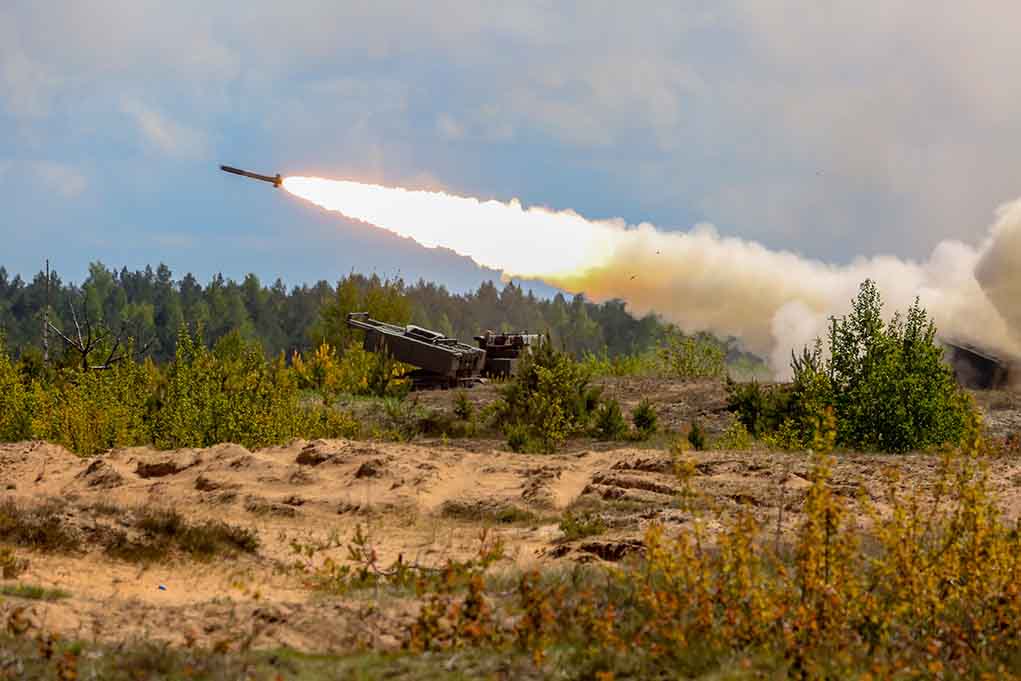
America’s new Dark Eagle hypersonic missile, secretly tested at Cape Canaveral Space Force Station, can strike targets 1,725 miles away at a devastating speed of 3,800 miles per hour – leaving potential adversaries with virtually no time to respond.
Key Takeaways
- The US has successfully tested the Dark Eagle hypersonic missile, capable of traveling at five times the speed of sound (3,800 mph)
- This truck-launched system has a 1,725-mile range and can strike global targets within minutes, evading traditional defense systems
- Each Dark Eagle unit will include four launchers and eight missiles, with deployment expected by 2025
- The development represents a significant advancement in America’s competition with China and other nations investing in hypersonic technology
- Military experts warn these weapons could redefine global security paradigms and potentially trigger a new arms race
America’s Hypersonic Breakthrough
The United States has made a significant leap forward in military technology with the secret testing of the Dark Eagle hypersonic missile. This cutting-edge weapon system can travel at an astonishing 3,800 miles per hour – five times the speed of sound – and strike targets up to 1,725 miles away within minutes. The test, conducted at Cape Canaveral Space Force Station, was kept largely under wraps by the Department of Defense due to national security concerns, signaling the strategic importance of this capability in today’s evolving threat landscape.
The Dark Eagle represents a new generation of offensive weaponry designed specifically to penetrate and overwhelm enemy defenses. As a land-based, truck-launched system, it offers mobility and versatility that complements America’s existing military capabilities. The system’s hypersonic speed makes it particularly difficult to track and intercept using conventional anti-missile defense systems, giving the United States a critical advantage in potential conflict scenarios. This development comes as President Trump continues to emphasize the importance of military readiness and technological superiority.
#China and #Japan ignite Asian hypersonic arms race
China’s breakthrough missile defense radar and Japan’s hypersonic missile test signal a smoldering East Asian arms race, heightening regional tensions.
China’s cutting-edge missile defense radar and Japan’s hypersonic missile… pic.twitter.com/m2kP4L4KzF
— Indo-Pacific News – Geo-Politics & Defense (@IndoPac_Info) July 12, 2024
Strategic Implications and Deployment
The Pentagon plans to deploy Dark Eagle missiles by fiscal year 2025, with each unit consisting of four launchers and eight missiles. This rapid integration into America’s military arsenal underscores the urgency with which the defense establishment views hypersonic capabilities. The system’s development comes amid growing concerns about similar advancements by potential adversaries, particularly China, which has been aggressively pursuing its own hypersonic weapons program. By accelerating the deployment of Dark Eagle, the United States aims to maintain its technological edge and strategic deterrence capabilities.
As Patrick Mason, a senior US official, noted, “hypersonic weapons complicate adversaries decision-making processes, enhancing deterrence.” said by Patrick Mason
The U.S. Navy is simultaneously developing its own hypersonic capability with the Conventional Prompt Strike system, designed for deployment on naval vessels. This multi-domain approach to hypersonic weapons reflects a comprehensive strategy to ensure American forces can deliver rapid, precise strikes from land, sea, and potentially air platforms. The versatility of these weapons systems provides military planners with expanded options for responding to threats across various theaters of operation, reinforcing America’s commitment to maintaining a powerful deterrent against aggression.
🇺🇲👉🇨🇳America has secret weapons that are more powerful than anyone can imagine! If there is no deal with China on tariffs and it escalates, Trump is ready for war⁉️
America lost a conventional war with Russia, but apparently no one wants to admit it!
America has secret weapons… pic.twitter.com/rXSrv6VV9t
— Peacemaker (@peacemaket71) April 11, 2025
Global Competition and Security Implications
The successful test of the Dark Eagle comes at a time when hypersonic weapons technology has become a focal point in global military competition. China, Russia, and other nations are investing heavily in similar capabilities, creating what some analysts describe as a new arms race. The extraordinary speed and maneuverability of hypersonic weapons pose unique challenges to existing defense systems and could potentially alter the strategic balance of power. Their ability to strike with little warning compresses decision-making timeframes, increasing the risk of miscalculation in crisis situations.
These developments raise important questions about the future of arms control agreements and international security cooperation. Traditional frameworks for limiting strategic weapons may prove inadequate for addressing the unique characteristics of hypersonic systems. Meanwhile, the rapid advancement of these technologies continues to drive innovation across military platforms. For the United States, maintaining a leadership position in hypersonic capabilities represents not just a military advantage but a critical national security imperative in an increasingly contested global environment.












